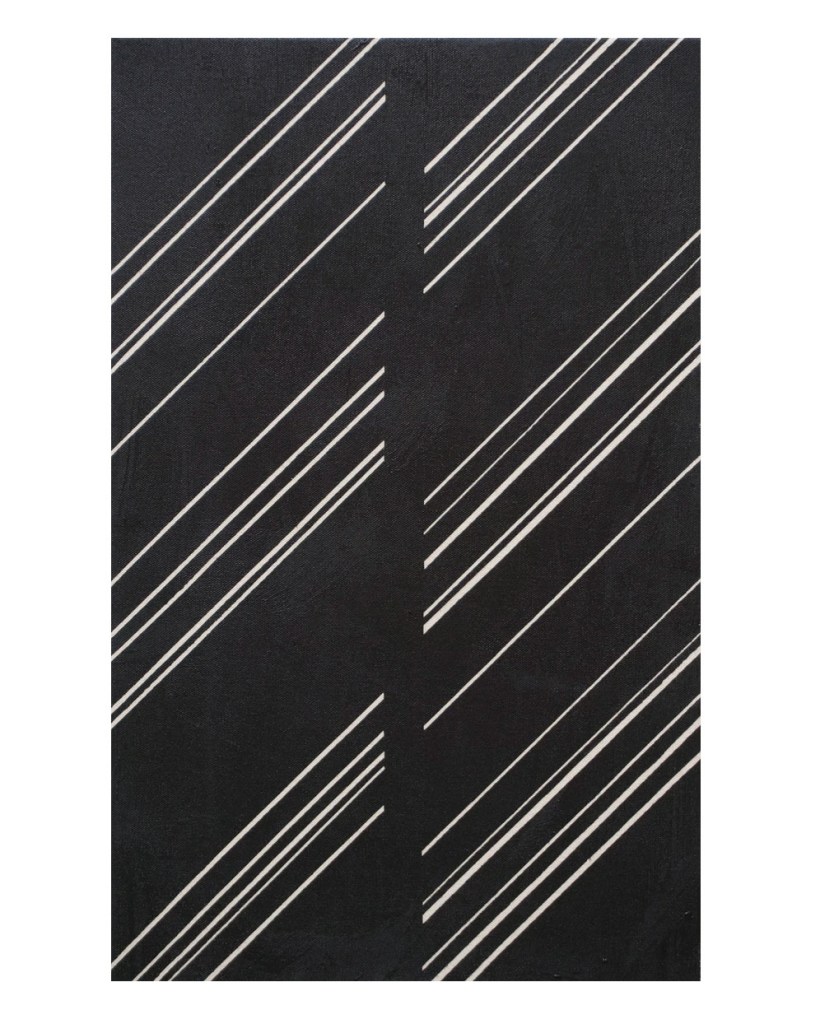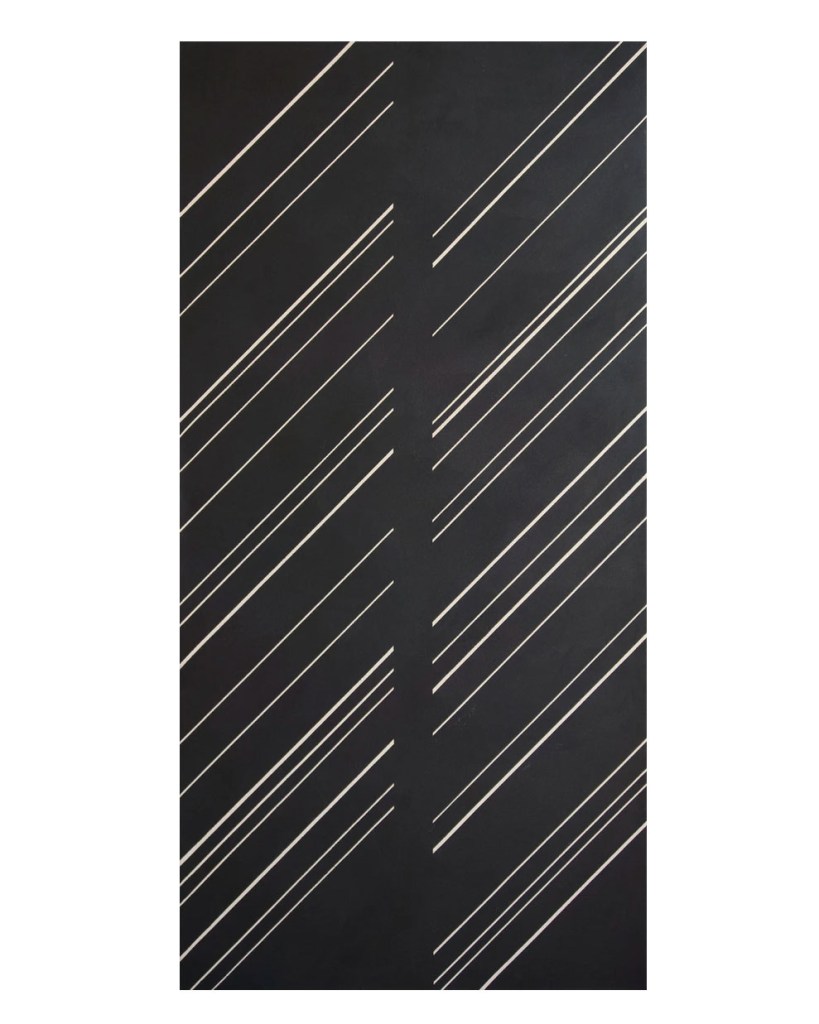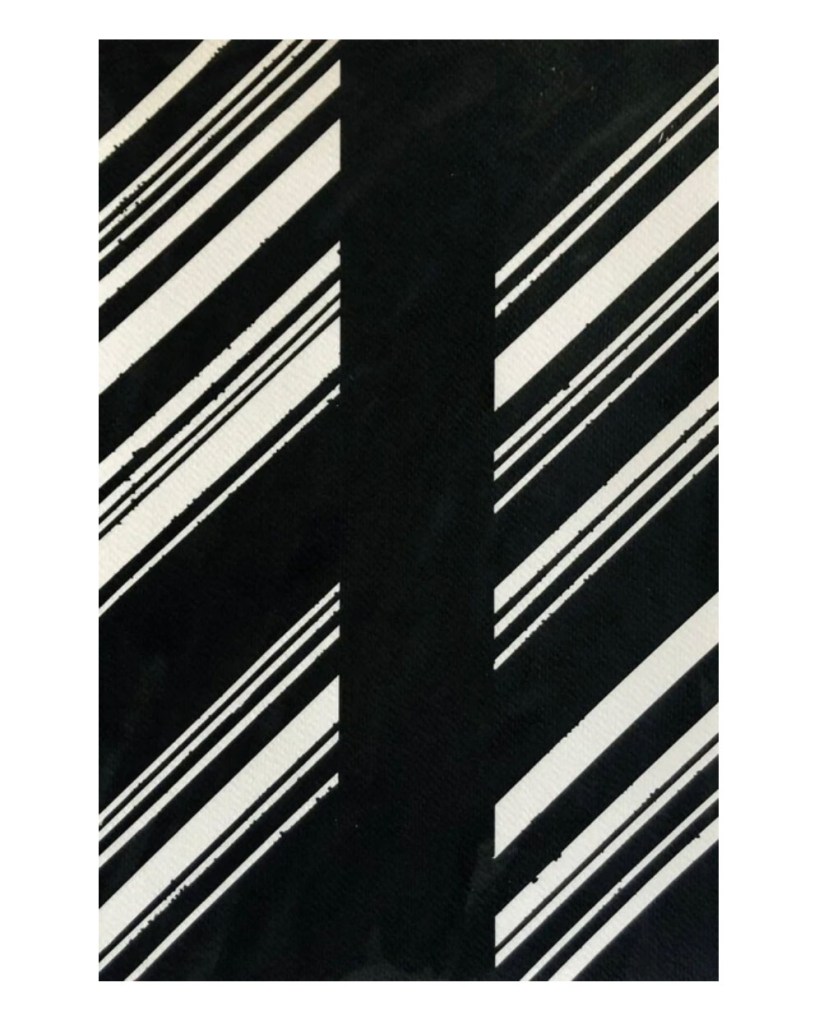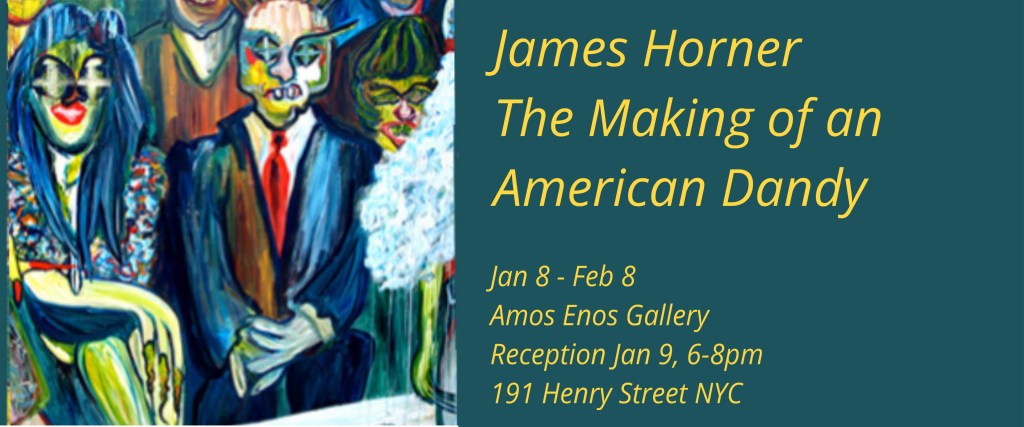
Contributed by Adam Simon / One could be forgiven for mistaking the paintings of David Rhodes at High Noon Gallery for samples of high-end décor, with black fabric punctuated by parallel diagonal stripes stretched over variously sized frames. Whether or not Rhodes anticipates that his work might elicit this response, for me it provided a hurdle, a momentary deflection, suspending my usual mode of engaging with art. I’m glad I had this moment of puzzlement, wondering what in fact I was looking at, before the significance of Rhodes’ achievement sank in.

Whereas earlier of Rhodes’ series (one of which can now be seen at Helm Contemporary) explored opticality to the extent of creating the illusion that sections of a painting existed on a separate plane or appeared to move, the Aletheia series is more understated in a way that induces an element of doubt. Initially, one assumes the kind of flatness consistent with Greenbergian abstraction. It is only gradually that a spatial dynamic asserts itself. Here the range between thick and thin, created by grouped lines of bare canvas, is narrower than it is in some of Rhodes’s earlier paintings. Nevertheless, thicker lines appear closer, thinner ones recede. It takes a moment to even register these distinctions and whatever front/back sequencing might be inferred is likely to be contradicted elsewhere in a group. Lines of varied thickness are separated by areas of black between each grouping. The width of the black spaces and varied thickness of the lines give rise to a complicated dance between flatness and illusion, between positive form and negative space.
Two other elements in each painting figure in this dance: a vertical band of black that runs up the middle; and areas of undisturbed black in two of the four corners. Both the central column and the corners assert a greater ambiguity of spatial location than the rest of the painted surface. It is difficult to say whether these are more forward or back. To further complicate matters, the more tightly grouped the bare canvas lines are, the more they tend to resemble slivers of light. Jared Linge, High Noon’s director, showed me a detail of a vintage superhero comic on his phone with similar diagonal striations that serve exactly this function. The lines also recall Hokusai woodcuts of rain and certain drawings of rain by Van Gogh.

Everything in these paintings seems to be in flux, implying a shifting reality that is never singular. This raises the question of how much of what our eyes see originates in the mind rather than in the optic nerve. If you find yourself at High Noon with another person, try comparing notes on what parts of each painting appear forward or back, or neither. Do we attach certainty to what we designate in the visual field simply as a way of keeping our sanity? Is identifying objects in space just a story we tell ourselves in order to gain confidence that we can cross a street without being hit by a car?
As I write this piece for publication in Two Coats of Paint, I’m aware that many of those who write for it, and who read it, are practicing artists, as much concerned with the how as the what. Often the how even supersedes the why. Rhodes makes a painting in a single session and the title of each is the date on which it was painted. His method is evident to the casual viewer: tape is laid down on bare canvas and covered with Carbon Black acrylic; when the tape is removed, small amounts of bleeding add a half-errant component, emphasizing both the weave of the canvas and the natural imprecision of the method. This economy of means is part of the content of the work.

Rhodes has titled the High Noon exhibition “Aletheia,” after the Greek goddess of truth. The press release references Heidegger’s analysis whereby truth is understood as “disclosure.” I have also seen Heidegger’s interpretation translated as “unhiddenness.” The term “unhiddenness” evokes how transparent is the making of Rhodes’ paintings. The straightforward way tthey are made feels almost mischievous in its inherent reproducibility. There is an implication that you, the viewer, could do this. I wouldn’t call it a denial as much as a reconfiguring of the notion of authorship, offering a kind of universal truth-value instead. Like the work of On Kawara or Blinky Palermo before him, Rhodes current paintings feel like part of a series that could continue indefinitely, Rhodes delighting in all the possible iterations of his algorithm.

“David Rhodes: Aletheia,” High Noon Gallery, 124 Forsyth Street, New York, NY. Through March 3, 2024.
“David Rhodes: Partita,” Helm Contemporary, 132 Bowery, New York, NY. January 26 through March 1, 2024.
About the author: Adam Simon is a New York artist and writer. His recent paintings combine corporate logotypes, stock photography, and tropes of modernist design.























“…this feels like a series that could continue indefinitely, Rhodes delighting in all the possible iterations of his algorithm.” There’s a satisfying quality to watching another artist deeply mine ideas.
I was also moved by the ratio of HEIGHT to width of the paintings at High Noon, the painting’s field towering over my head, but offering an escape route to either side. As well as how they get along with the narrow tall space of the gallery.
Frank Stella 1959.
Frank Stella 1959… can you say more?